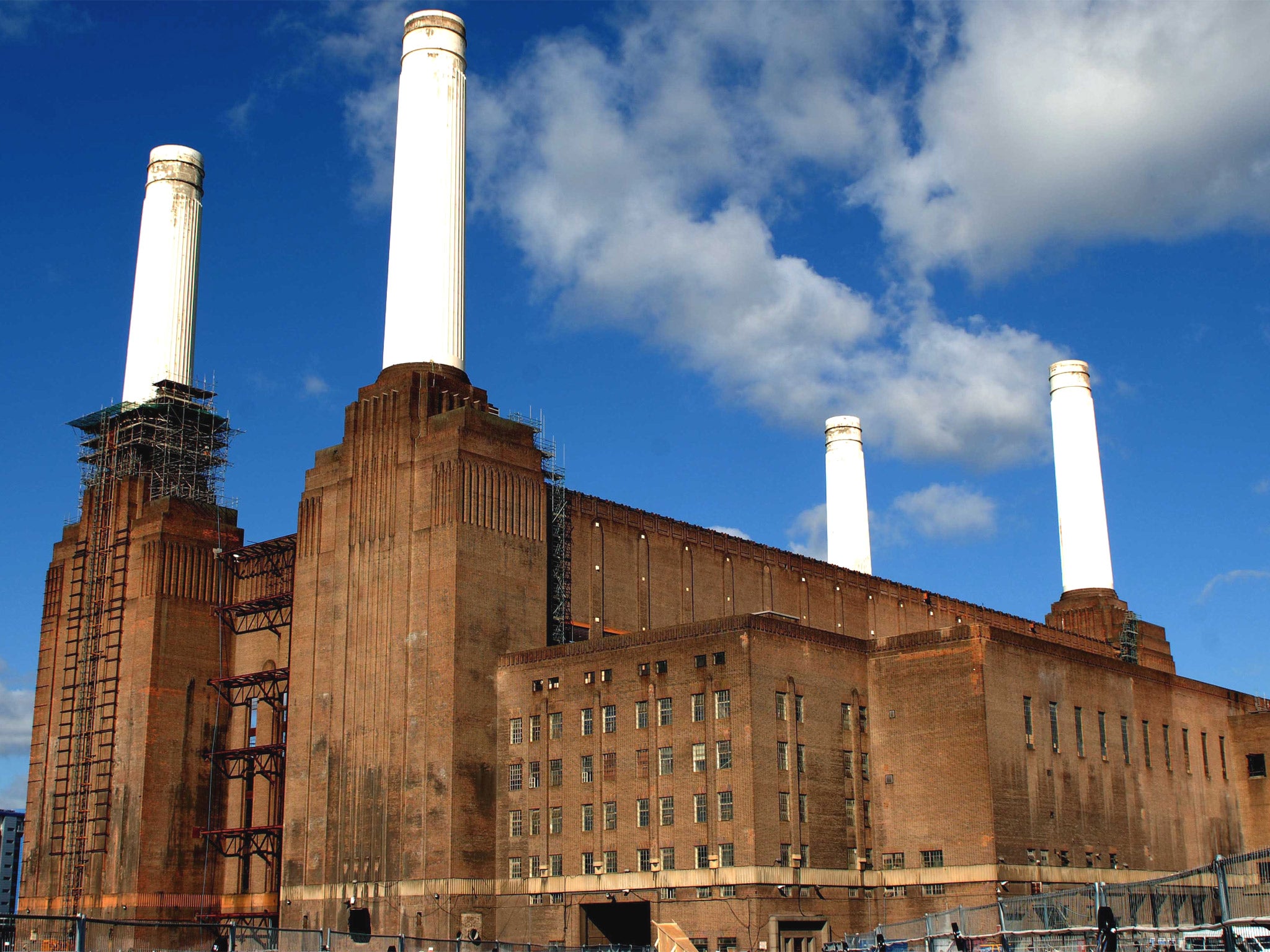Battersea Power Station developers vow to pull down and rebuild iconic chimneys in just two years

Your support helps us to tell the story
From reproductive rights to climate change to Big Tech, The Independent is on the ground when the story is developing. Whether it's investigating the financials of Elon Musk's pro-Trump PAC or producing our latest documentary, 'The A Word', which shines a light on the American women fighting for reproductive rights, we know how important it is to parse out the facts from the messaging.
At such a critical moment in US history, we need reporters on the ground. Your donation allows us to keep sending journalists to speak to both sides of the story.
The Independent is trusted by Americans across the entire political spectrum. And unlike many other quality news outlets, we choose not to lock Americans out of our reporting and analysis with paywalls. We believe quality journalism should be available to everyone, paid for by those who can afford it.
Your support makes all the difference.The developers behind Battersea Power Station have vowed that the iconic building’s chimneys, which face a “vicious circle of deterioration,” will be demolished and rebuilt in just two years.
The developers, engineers and English Heritage have all warned that the 103-metre chimneys which mark out one of London’s best-loved buildings would continue to crumble and decay causing a danger to the public.
Should nothing have been done, the top five metres were “more likely to fail in the short term” according to one expert, causing huge problems for the £8 billion redevelopment of the entire site. In private talks they did not rule even worse structural damage to the chimneys.
The plan is to demolish and rebuild each of the four stacks significantly earlier than had previously been expected. The plans had originally envisioned it would take five years before planning consent to quicken the process was granted.
Justin Philips, project principal and partner of engineering consultants Buro Happold, has worked on the issue of how to repair the stacks for over 15 years. He said the chimneys will be at their “full height and re-painted the original colour” by 2016.
He said: “They’re in a pretty bad state. If you were to go up and see at close quarters the state of the concrete you’d see the legacy that 50 years of service and 30 years of dereliction has left.” Without redevelopment there would have to be “extensive exclusion zones to protect the public”.
Nick Barratt described the work as an “enormous engineering challenge”. He added in a video to be posted today on the developers’ website: “If nothing is done, the chimneys will continue to disintegrate and be lost forever.”
The southwest chimney, which is in the worst state as it is the oldest and the most exposed to the weather conditions, is the first to come down. “However all four are afflicted with corrosion and decay,” Mr Philips said.
Salt and carbon dioxide from the air have damaged the concrete, while the steel has become corroded and rusted. The structure has subsequently become less stable.
Mr Philips said: “During the reconstruction we are going to duplicate exactly the original design and construction of these chimneys. “
The southwest chimney will be scanned, with the resulting 3D model used to rebuild all four chimneys.
The stacks will be destroyed by a self-climbing rig which will start at the top and work its way down using four concrete crushers to demolish the structure by breaking off six-inch sections and sending the debris down a funnel inside the chimney.
Work will then begin to rebuild the chimney using the same materials and technique as the originals except for a steel reinforcement to improve the construction.
The difference will be the chimneys will use a mix of cement that will not lead to the same corrosion and decay currently affecting the stacks.
The power station, designed by Sir Giles Gilbert Scott, was opened in 1933 and was expanded after the Second World War. In 1983 it was decommissioned, and the site remained derelict ever since.
A series of developers have tabled proposals for the Grade II* listed building, including a theme park, as well as a proposed move for Chelsea Football Club’s ground. It was sold to a consortium in 2012.
Preserving the chimneys has been a key part of the discussions. Tim Jones, of English Heritage, said the chimneys had been the subject of a “lot of discussion” over the years the building has been empty.
“We’ve reached the stage with the chimneys whereby we have got to take a view on their future.”
English Heritage has approved the plan for the chimneys to be taken down and then reconstructed. “We’ve worked very closely with a number of developers,” Mr Jones said. “We’re satisfied this is the way forward and once they’ve been deconstructed and go up again, you won’t know the difference.”
Last week plans for some of the proposed homes for the site were unveiled by architects Frank Gehry and Norman Foster. In all 3,400 homes are planned for the entire redevelopment.
Join our commenting forum
Join thought-provoking conversations, follow other Independent readers and see their replies
Comments